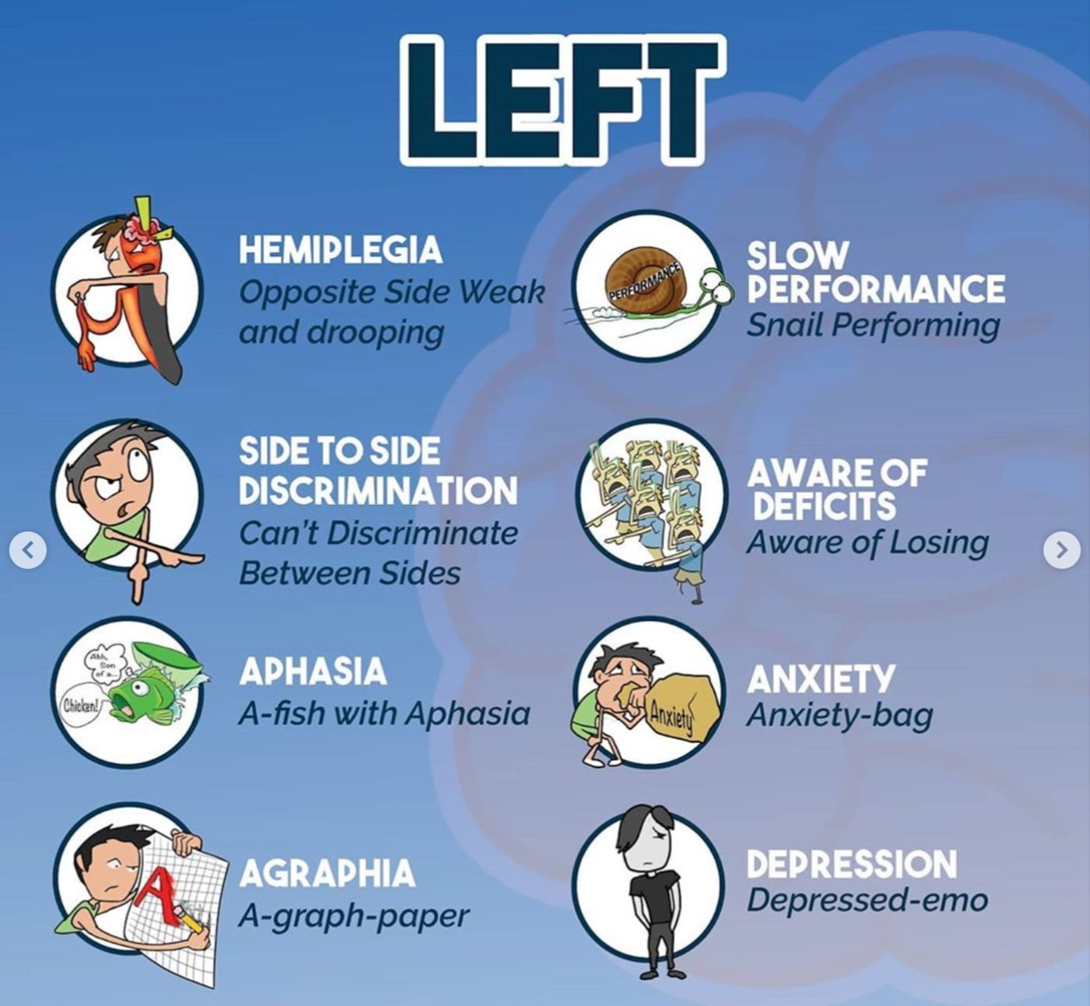A male client was admitted with a left-sided stroke this morning. The assistive personnel asks about meeting the client’s nutritional needs. Which response by the nurse is appropriate?
He is NPO until the speech-language pathologist performs a swallowing evaluation.
Be sure to sit him up when you are feeding him to make him feel more natural.
You may give him a full-liquid diet, but please avoid solid foods until he gets stronger.
Just be sure to add some thickener in his liquids to prevent choking and aspiration.
None
None
The Correct Answer is A
Choice A: He is NPO until the speech-language pathologist performs a swallowing evaluation.
When a client is admitted with a stroke, especially one affecting the left side, there is a significant risk of dysphagia, or difficulty swallowing. This can lead to choking and aspiration, which can cause pneumonia and other complications. Therefore, it is crucial to keep the client NPO (nothing by mouth) until a speech-language pathologist can perform a thorough swallowing evaluation. This ensures that the client can safely swallow without the risk of aspiration. The speech-language pathologist will assess the client’s ability to swallow different textures and consistencies of food and liquids and provide recommendations for safe feeding.

Choice B: Be sure to sit him up when you are feeding him to make him feel more natural.
While sitting the client up during feeding is a good practice to reduce the risk of aspiration, it is not sufficient on its own for a client who has just had a stroke. Without a proper swallowing evaluation, feeding the client could still pose a significant risk. Therefore, this choice is not the most appropriate response.
Choice C: You may give him a full-liquid diet, but please avoid solid foods until he gets stronger.
A full-liquid diet might seem like a safer option, but it still poses a risk of aspiration if the client has dysphagia. Without a swallowing evaluation, it is not safe to assume that the client can handle even a full-liquid diet. Therefore, this choice is not appropriate.
Choice D: Just be sure to add some thickener in his liquids to prevent choking and aspiration.
Adding thickener to liquids can help some clients with dysphagia, but it is not a one-size-fits-all solution. The appropriate consistency of liquids should be determined by a speech-language pathologist after a swallowing evaluation. Therefore, this choice is not appropriate without a prior assessment.
Nursing Test Bank
Naxlex Comprehensive Predictor Exams
Related Questions
Correct Answer is ["A","B","C","D","E"]
Explanation
Choice A Reason:
Monitoring the QT interval is crucial when administering amiodarone because this drug can prolong the QT interval, increasing the risk of torsades de pointes, a potentially life-threatening type of ventricular tachycardia. Regular monitoring helps in early detection and management of this adverse effect, ensuring patient safety.
Title: Choice B Reason:
Heart rate monitoring is essential as amiodarone can cause bradycardia (slow heart rate). Continuous monitoring allows the nurse to detect any significant changes in heart rate and take appropriate actions, such as adjusting the medication dosage or providing interventions to manage bradycardia.
Title: Choice C Reason:
Respiratory rate monitoring is necessary because amiodarone can cause pulmonary toxicity, including interstitial pneumonitis and acute respiratory distress syndrome (ARDS). By keeping track of the respiratory rate, the nurse can identify early signs of respiratory complications and intervene promptly
Title: Choice D Reason:
Heart rhythm monitoring is vital since amiodarone is used to treat arrhythmias. Continuous electrocardiogram (ECG) monitoring helps in assessing the effectiveness of the drug in controlling arrhythmias and detecting any new or worsening arrhythmias that may require immediate attention.
Title: Choice E Reason:
Monitoring urine output is important because amiodarone can affect renal function, especially in patients with pre-existing kidney conditions. Keeping track of urine output helps in assessing renal function and ensuring that the drug is not causing nephrotoxicity
Correct Answer is B
Explanation
Choice A reason:
Elevating the head of the client’s bed can help reduce blood pressure slightly by promoting venous return and decreasing intracranial pressure. However, this action alone is not sufficient to address the severe hypertension (254/139 mm Hg) the client is experiencing. Immediate medical intervention is required to prevent complications such as stroke, heart attack, or organ damage.
Choice B reason:
Contacting the Rapid Response Team is the highest priority action. The Rapid Response Team is trained to handle critical situations and can provide immediate interventions to stabilize the client’s condition. Severe hypertension at this level requires urgent medical attention to prevent life-threatening complications. The team can administer medications to lower blood pressure quickly and monitor the client closely.
Choice C reason:
Telling the client to report vision changes is important because vision changes can indicate hypertensive retinopathy or increased intracranial pressure. However, this action is not the immediate priority. The client’s blood pressure needs to be controlled urgently to prevent further complications.
Choice D reason:
Inserting a peripheral IV is necessary for administering medications and fluids. While this is an important step, it should follow the immediate action of contacting the Rapid Response Team. The team can then use the IV access to administer antihypertensive medications promptly.
Choice E reason:
Initiating seizure precautions is important because severe hypertension can lead to seizures. However, this action is not the first priority. The primary focus should be on stabilizing the client’s blood pressure through immediate medical intervention.
Whether you are a student looking to ace your exams or a practicing nurse seeking to enhance your expertise , our nursing education contents will empower you with the confidence and competence to make a difference in the lives of patients and become a respected leader in the healthcare field.
Visit Naxlex, invest in your future and unlock endless possibilities with our unparalleled nursing education contents today
Report Wrong Answer on the Current Question
Do you disagree with the answer? If yes, what is your expected answer? Explain.
Kindly be descriptive with the issue you are facing.
